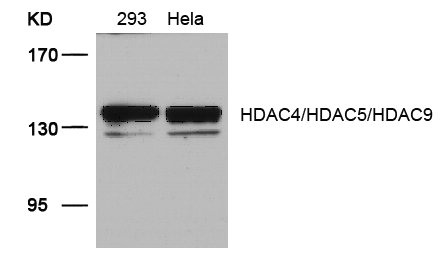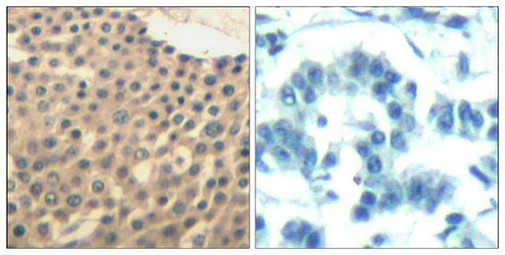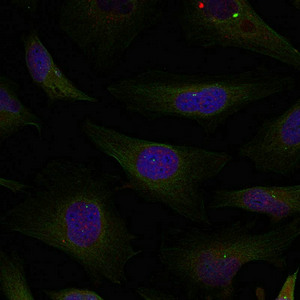
Western blot analysis of extracts from 293 and Hela cells using HDAC4/HDAC5/HDAC9(Ab-246/259/220) Antibody.
HDAC4/HDAC5/HDAC9 (Ab-246/259/220) Antibody

CSB-PA594002
ApplicationsImmunoFluorescence, Western Blot, ELISA, ImmunoHistoChemistry
Product group Antibodies
ReactivityHuman
TargetHDAC9
Overview
- SupplierCusabio
- Product NameHDAC4/HDAC5/HDAC9 (Ab-246/259/220) Antibody
- Delivery Days Customer20
- ApplicationsImmunoFluorescence, Western Blot, ELISA, ImmunoHistoChemistry
- CertificationResearch Use Only
- ClonalityPolyclonal
- ConjugateUnconjugated
- Gene ID9734
- Target nameHDAC9
- Target descriptionhistone deacetylase 9
- Target synonymsHD7; HD7b; HD9; HDAC; HDAC7; HDAC7B; HDAC9B; HDAC9FL; HDRP; histone deacetylase 4/5-related protein; histone deacetylase 7B; histone deacetylase 9; MEF-2 interacting transcription repressor (MITR) protein; MITR
- HostRabbit
- IsotypeIgG
- Protein IDP56524
- Protein NameHistone deacetylase 4
- Scientific DescriptionResponsible for the deacetylation of lysine residues on the N-terminal part of the core histones (H2A, H2B, H3 and H4). Histone deacetylation gives a tag for epigenetic repression and plays an important role in transcriptional regulation, cell cycle progression and developmental events. Histone deacetylases act via the formation of large multiprotein complexes. Involved in muscle maturation via its interaction with the myocyte enhancer factors such as MEF2A, MEF2C and MEF2D. Cress, W.D. and Seto, E. (2000) J Cell Physiol 184, 1-16. Vigushin, D.M. and Coombes, R.C. (2004) Curr. Cancer Drug Targets 4, 205-218. Marmorstein, R. (2001) Cell Mol Life Sci 58, 693-703. Thiagalingam, S. et al. (2003) Ann. N.Y. Acad. Sci. 983, 84-100.
- ReactivityHuman
- Storage Instruction-20°C or -80°C
- UNSPSC12352203


